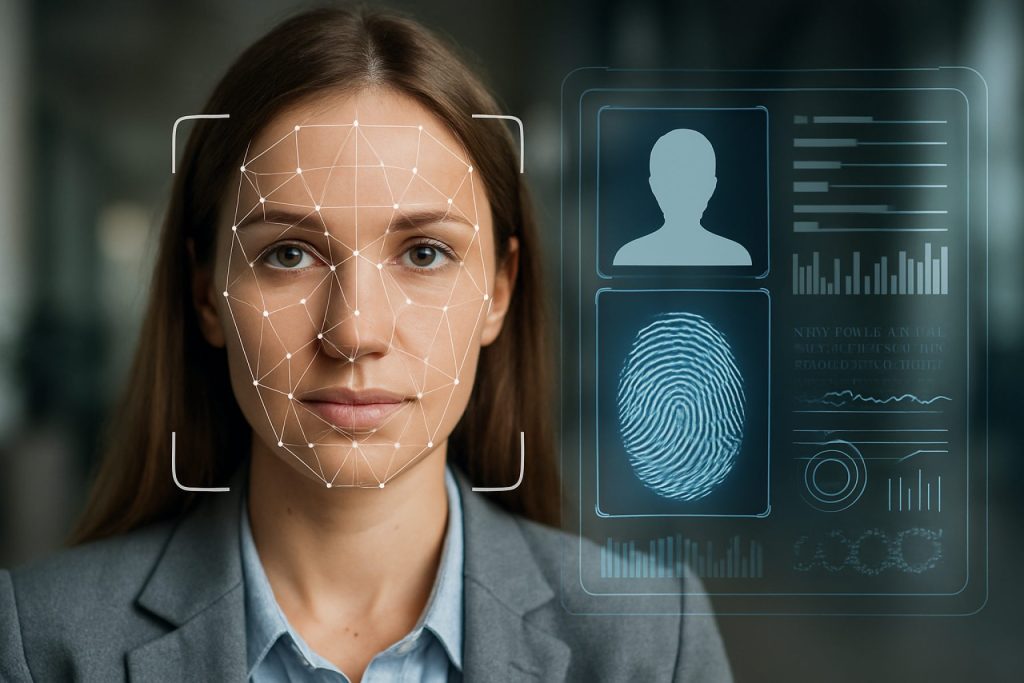
2025 Biometric Spoofing Detection Technologies Market Report: Unveiling AI Innovations, Competitive Dynamics, and Global Growth Projections. Explore Key Trends, Regional Insights, and Strategic Opportunities Shaping the Next Five Years.
- Executive Summary & Market Overview
- Key Technology Trends in Biometric Spoofing Detection (2025–2030)
- Competitive Landscape and Leading Players
- Market Growth Forecasts and CAGR Analysis (2025–2030)
- Regional Market Analysis: North America, Europe, APAC, and Rest of World
- Challenges, Risks, and Emerging Opportunities
- Future Outlook: Strategic Recommendations and Investment Insights
- Sources & References
Executive Summary & Market Overview
Biometric spoofing detection technologies are specialized solutions designed to identify and prevent fraudulent attempts to bypass biometric authentication systems using fake or altered biometric traits, such as artificial fingerprints, facial masks, or voice recordings. As biometric authentication becomes increasingly prevalent across sectors like banking, healthcare, border control, and consumer electronics, the threat of spoofing attacks has grown, driving demand for advanced anti-spoofing measures.
The global market for biometric spoofing detection technologies is projected to experience robust growth through 2025, fueled by rising security concerns, regulatory mandates, and the rapid adoption of biometrics in digital identity verification. According to MarketsandMarkets, the biometric system market is expected to reach USD 82.9 billion by 2027, with anti-spoofing solutions representing a critical component of this expansion. The proliferation of deepfake technologies and sophisticated presentation attacks has further underscored the need for liveness detection and multi-modal authentication systems.
Key industry players—including NEC Corporation, Thales Group, IDEMIA, and Synaptics—are investing heavily in research and development to enhance the accuracy and reliability of spoofing detection algorithms. These efforts are complemented by the integration of artificial intelligence (AI) and machine learning (ML) techniques, which enable real-time analysis of biometric data and improve the system’s ability to distinguish between genuine and fraudulent inputs.
Regulatory frameworks such as the European Union’s General Data Protection Regulation (GDPR) and the U.S. National Institute of Standards and Technology (NIST) guidelines are also shaping the market landscape, compelling organizations to adopt robust anti-spoofing measures to ensure compliance and protect user privacy. The financial services sector, in particular, is witnessing accelerated adoption of biometric spoofing detection technologies, as institutions seek to mitigate fraud risks associated with remote onboarding and mobile banking.
In summary, the biometric spoofing detection technologies market in 2025 is characterized by rapid innovation, heightened security requirements, and expanding application areas. The convergence of AI-driven analytics, regulatory compliance, and evolving threat vectors is expected to sustain strong market momentum, positioning anti-spoofing solutions as a cornerstone of next-generation biometric security.
Key Technology Trends in Biometric Spoofing Detection (2025–2030)
Between 2025 and 2030, biometric spoofing detection technologies are expected to undergo significant advancements, driven by the increasing sophistication of spoofing attacks and the growing adoption of biometrics in critical sectors such as banking, healthcare, and border security. Spoofing detection, also known as liveness detection or anti-spoofing, refers to the set of technologies designed to distinguish between genuine biometric traits and fraudulent attempts using artifacts like photos, masks, or synthetic data.
One of the most prominent trends is the integration of artificial intelligence (AI) and deep learning algorithms into spoofing detection systems. These AI-powered solutions can analyze subtle cues—such as micro-movements, texture inconsistencies, and physiological responses—that are difficult for traditional rule-based systems to detect. For instance, convolutional neural networks (CNNs) are increasingly used in facial recognition systems to identify 3D mask attacks and deepfake videos, while recurrent neural networks (RNNs) are being applied to voice biometrics to detect playback and synthetic speech attacks. According to International Data Corporation (IDC), AI-driven biometric security solutions are projected to see double-digit growth rates through 2030, reflecting their effectiveness and market demand.
Another key trend is the adoption of multimodal biometric systems, which combine two or more biometric modalities—such as fingerprint, face, iris, or voice recognition—to enhance spoofing resistance. Multimodal systems make it significantly harder for attackers to spoof all modalities simultaneously, thereby increasing overall security. Gartner notes that by 2027, over 60% of enterprise biometric deployments will incorporate multimodal authentication, up from less than 30% in 2023.
Hardware-based liveness detection is also gaining traction, particularly in mobile and IoT devices. Innovations such as infrared imaging, 3D structured light, and ultrasonic sensors are being embedded into consumer devices to capture depth information and blood flow patterns, making it more difficult for attackers to use static images or prosthetics. ABI Research highlights that hardware-anchored biometric solutions are expected to account for a growing share of the market, especially in high-security applications.
Finally, the emergence of privacy-preserving technologies, such as federated learning and on-device processing, is shaping the future of spoofing detection. These approaches enable biometric data to be analyzed locally without transmitting sensitive information to central servers, addressing regulatory and user privacy concerns. As regulatory frameworks like the EU’s AI Act and global data protection laws evolve, vendors are prioritizing compliance and transparency in their spoofing detection offerings (European Union).
Competitive Landscape and Leading Players
The competitive landscape for biometric spoofing detection technologies in 2025 is characterized by rapid innovation, strategic partnerships, and a growing number of specialized vendors. As biometric authentication becomes increasingly prevalent across sectors such as banking, government, and consumer electronics, the need for robust anti-spoofing solutions has intensified. This has led to a dynamic market where established biometric technology providers and agile startups compete to deliver advanced liveness detection and anti-spoofing capabilities.
Key players in this space include NEC Corporation, Thales Group, IDEMIA, and Precise Biometrics. These companies have integrated sophisticated machine learning algorithms and multi-modal biometric systems to counter increasingly sophisticated spoofing attacks, such as 3D mask attacks, deepfakes, and synthetic fingerprints. For instance, NEC Corporation has invested heavily in AI-driven liveness detection, while Thales Group has focused on multi-factor authentication combining facial, fingerprint, and iris recognition.
Emerging players such as Zighra and NexusTek are gaining traction by offering cloud-based and edge AI solutions that can be rapidly deployed and scaled. These companies often target niche applications, such as mobile banking or remote onboarding, where real-time spoofing detection is critical. Additionally, academic spin-offs and research-driven startups are contributing to the competitive landscape by commercializing novel anti-spoofing techniques, including photoplethysmography (PPG) for facial liveness and behavioral biometrics.
Strategic collaborations are also shaping the market. For example, IDEMIA has partnered with major financial institutions to integrate its anti-spoofing technology into digital onboarding workflows, while Precise Biometrics collaborates with smartphone manufacturers to embed liveness detection at the sensor level. According to MarketsandMarkets, the competitive intensity is expected to increase as regulatory requirements for biometric security tighten and as end-users demand higher assurance levels.
- NEC Corporation: AI-driven liveness detection
- Thales Group: Multi-modal biometric authentication
- IDEMIA: Financial sector partnerships
- Precise Biometrics: Sensor-level anti-spoofing
- Zighra, NexusTek: Cloud and edge AI solutions
Market Growth Forecasts and CAGR Analysis (2025–2030)
The global market for biometric spoofing detection technologies is poised for robust growth between 2025 and 2030, driven by escalating security concerns, regulatory mandates, and the proliferation of biometric authentication across sectors such as banking, healthcare, and government. According to projections by MarketsandMarkets, the biometric system market, which includes spoofing detection solutions, is expected to achieve a compound annual growth rate (CAGR) of approximately 13–15% during this period. This growth is underpinned by the increasing sophistication of spoofing attacks, necessitating advanced liveness detection and anti-spoofing technologies.
Regionally, North America and Europe are anticipated to maintain their dominance due to early adoption of biometric systems and stringent data protection regulations. However, the Asia-Pacific region is forecasted to exhibit the highest CAGR, fueled by rapid digital transformation, government-led digital identity initiatives, and expanding mobile payment ecosystems. International Data Corporation (IDC) highlights that Asia-Pacific’s demand for biometric security, particularly in financial services and public sector applications, will significantly outpace global averages through 2030.
Technological advancements are a key growth catalyst. The integration of artificial intelligence (AI) and machine learning (ML) into biometric spoofing detection is expected to enhance accuracy and reduce false acceptance rates. Vendors are increasingly investing in multi-modal biometric solutions—combining fingerprint, facial, and voice recognition with robust liveness detection—to counteract evolving spoofing techniques. Gartner forecasts that by 2030, over 80% of biometric authentication deployments will incorporate advanced spoofing detection, compared to less than 50% in 2025.
- Banking & Finance: The sector is projected to be a major revenue contributor, with regulatory compliance (e.g., PSD2, KYC) driving adoption of anti-spoofing technologies.
- Healthcare: Growing use of telemedicine and digital health records is accelerating demand for secure, spoof-resistant biometric authentication.
- Consumer Electronics: Integration of liveness detection in smartphones and IoT devices is expected to surge, especially in emerging markets.
In summary, the biometric spoofing detection technologies market is set for double-digit CAGR growth from 2025 to 2030, with innovation, regulatory pressure, and expanding application areas as primary drivers. Market participants are advised to focus on AI-driven solutions and regional expansion to capitalize on emerging opportunities.
Regional Market Analysis: North America, Europe, APAC, and Rest of World
The global market for biometric spoofing detection technologies is experiencing robust growth, with regional dynamics shaped by regulatory frameworks, technological adoption rates, and sector-specific demand. In 2025, North America, Europe, Asia-Pacific (APAC), and the Rest of the World (RoW) each present distinct opportunities and challenges for vendors and end-users.
North America remains the largest and most mature market for biometric spoofing detection, driven by stringent regulatory requirements in sectors such as banking, government, and healthcare. The U.S. leads in adoption, with widespread integration of liveness detection and anti-spoofing algorithms in facial recognition and fingerprint systems. The presence of major technology providers and ongoing investments in R&D further bolster the region’s leadership. According to International Data Corporation (IDC), North America accounted for over 35% of global biometric security spending in 2024, a trend expected to continue in 2025.
Europe is characterized by a strong emphasis on privacy and data protection, with the General Data Protection Regulation (GDPR) influencing the deployment of biometric systems. The region is witnessing increased adoption in border control, public safety, and financial services, with governments investing in advanced spoofing detection to comply with regulatory mandates. The European Union’s focus on digital identity frameworks, such as eIDAS, is accelerating the integration of robust anti-spoofing measures. Eurostat reports a 22% year-on-year increase in biometric authentication deployments across EU member states in 2024.
APAC is the fastest-growing region, fueled by large-scale government initiatives (e.g., India’s Aadhaar, China’s national ID programs) and rapid digital transformation in banking and mobile payments. The region faces unique challenges, including high population diversity and varying levels of infrastructure maturity, which drive demand for adaptive and scalable spoofing detection solutions. According to Gartner, APAC’s biometric security market is projected to grow at a CAGR of 18% through 2025, outpacing global averages.
- Rest of the World (RoW) includes Latin America, the Middle East, and Africa, where adoption is nascent but accelerating, particularly in financial inclusion and border security projects. Limited infrastructure and budget constraints remain barriers, but international aid and public-private partnerships are fostering market entry for advanced spoofing detection technologies.
Overall, regional market dynamics in 2025 reflect a convergence of regulatory, technological, and socio-economic factors, with North America and Europe prioritizing compliance and security, APAC driving scale and innovation, and RoW focusing on foundational deployments.
Challenges, Risks, and Emerging Opportunities
Biometric spoofing detection technologies are at the forefront of securing authentication systems against increasingly sophisticated attacks. As the adoption of biometrics in sectors such as banking, healthcare, and border control accelerates, the challenges and risks associated with spoofing—where attackers use fake biometric traits like masks, photos, or synthetic fingerprints—have become more pronounced. In 2025, the threat landscape is evolving rapidly, with attackers leveraging advanced materials, deepfake technologies, and AI-generated artifacts to bypass traditional biometric systems.
One of the primary challenges is the arms race between spoofing techniques and detection capabilities. Attackers are now using high-resolution 3D printing and hyper-realistic silicone masks, making it difficult for conventional liveness detection algorithms to distinguish between genuine and fake traits. Additionally, the proliferation of deepfake software has enabled the creation of highly convincing synthetic faces and voices, further complicating detection efforts. According to National Institute of Standards and Technology (NIST), the false acceptance rates for some facial recognition systems can increase significantly when exposed to sophisticated spoofing attacks.
Another risk is the potential for bias and reduced accuracy in spoofing detection across diverse demographic groups. Studies have shown that some liveness detection algorithms perform inconsistently across different skin tones, ages, and genders, raising concerns about fairness and inclusivity. Regulatory scrutiny is intensifying, with authorities such as the European Commission emphasizing the need for transparent and unbiased biometric systems.
Despite these challenges, emerging opportunities are reshaping the market. The integration of multimodal biometrics—combining face, fingerprint, voice, and behavioral traits—offers a more robust defense against spoofing. Advances in AI and machine learning are enabling real-time, adaptive liveness detection that can analyze subtle cues such as micro-movements, blood flow, and thermal signatures. Companies like IDEMIA and NEC Corporation are investing heavily in R&D to develop next-generation anti-spoofing solutions.
- Growing demand for cloud-based and edge AI solutions is enabling faster, more scalable spoofing detection deployments.
- Partnerships between biometric vendors and cybersecurity firms are fostering holistic security ecosystems.
- Regulatory frameworks, such as the EU’s proposed AI Act, are expected to drive innovation in privacy-preserving and explainable spoofing detection technologies.
In summary, while the risks and challenges in biometric spoofing detection are intensifying in 2025, the sector is also witnessing significant innovation and investment, paving the way for more secure and inclusive authentication systems.
Future Outlook: Strategic Recommendations and Investment Insights
The future outlook for biometric spoofing detection technologies in 2025 is shaped by rapid advancements in artificial intelligence (AI), increasing regulatory scrutiny, and the growing sophistication of attack vectors. As biometric authentication becomes ubiquitous across sectors such as banking, healthcare, and border security, the imperative to invest in robust anti-spoofing solutions intensifies. Strategic recommendations for stakeholders center on technology innovation, ecosystem partnerships, and proactive regulatory alignment.
Firstly, investment in AI-driven liveness detection and multimodal biometric systems is critical. Leading vendors are integrating deep learning algorithms to distinguish between genuine biometric traits and sophisticated spoofing attempts, such as 3D masks or deepfake videos. For example, companies like IDEMIA and NEC Corporation are enhancing their platforms with advanced presentation attack detection (PAD) capabilities, which are expected to become industry standard by 2025.
Secondly, strategic partnerships with cybersecurity firms and academic research institutions can accelerate innovation and threat intelligence sharing. Collaborations foster the development of open-source datasets and benchmarking tools, which are essential for training and validating anti-spoofing algorithms. The National Institute of Standards and Technology (NIST) continues to play a pivotal role in setting evaluation protocols and performance metrics for biometric systems, and alignment with such standards will be crucial for market acceptance.
Thirdly, regulatory compliance is emerging as a key investment driver. The European Union’s General Data Protection Regulation (GDPR) and similar frameworks in Asia-Pacific and North America are mandating higher standards for biometric data protection and transparency. Companies that proactively embed privacy-by-design principles and secure data handling practices into their spoofing detection solutions will be better positioned to capture enterprise and government contracts. According to Gartner, regulatory-driven spending on biometric security is projected to grow at a double-digit CAGR through 2025.
Finally, investors should monitor emerging markets, particularly in Asia-Pacific and Latin America, where digital identity initiatives and mobile banking adoption are accelerating demand for advanced biometric security. Early-stage investments in startups specializing in behavioral biometrics and continuous authentication could yield significant returns as these technologies mature and achieve commercial scale.
In summary, the 2025 landscape for biometric spoofing detection technologies will reward stakeholders who prioritize AI innovation, cross-sector collaboration, regulatory foresight, and targeted geographic expansion.
Sources & References
- MarketsandMarkets
- NEC Corporation
- Thales Group
- IDEMIA
- Synaptics
- International Data Corporation (IDC)
- ABI Research
- European Union
- Zighra
- NexusTek
- National Institute of Standards and Technology (NIST)
- European Commission



